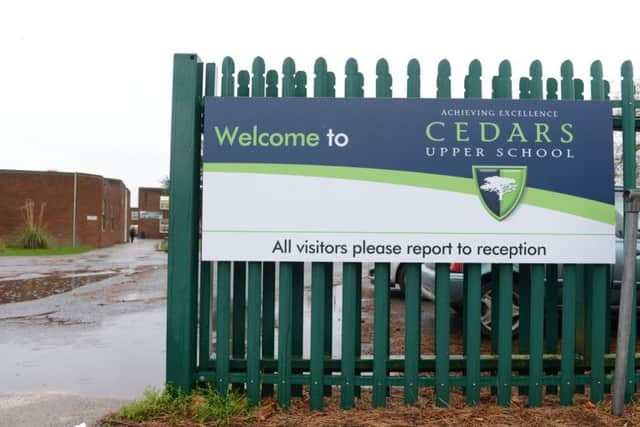NUT predicts Vandyke to lose 12 teachers and Cedars 13


According to data collated by the National Union of Teachers (NUT) and the Association of Teachers & Lecturers (ATL), Central Bedfordshire’s schools face a funding cut worth more than £14.5m.
This will mean an average £398 less is spent for every pupil at a state school over the year.
Advertisement
Hide AdAdvertisement
Hide AdThe figures relate to proposed new funding formula which have been put forward by the government.


According to the union figures, Vandyke Upper School could lose 12 teachers by 2019, with a £484,239 (12%)budget cut (£709 per pupil).
Cedars Upper could lose 13 teachers and £474,775 (10%) from its budget by 2019 (£564 per pupil).
Other local schools and the number of predicted teacher cuts are: Linslade Academy (7), Greenleas (3), Brooklands (7), Gilbert Inglefield (7), Southcott (1 teaching assistant), Linslade Lower (1), Mary Bassett (1), Leighton Middle (4), Pulfords (1 teaching assistant), St George’s (2), Clipstone Brook (1 teaching assistant), Leedon (1), Beaudesert (1), Dovery Down (1 teaching assistant), Heathwood (0), St Leonards (1 teaching assistant), Overstone (1), Cottesloe School (2), Wingrave (2), Cheddington (1), Brookmead (2), St Michael’s (1).
Advertisement
Hide AdAdvertisement
Hide AdThe NUT and ATL claim that 98 per cent of schools across the UK will lose out under the changes, leaving them with increased class sizes, loss of school staff, and cuts to extra-curricular activities and resources.


Tim Carroll head of Vandyke Upper wrote in the LBO earlier this month about the impact of the proposed funding formula.
He said lower schools might benefit from the new calculations but said the outlook was gloomier for middle and upper schools.
He said: “How each middle and upper school will cope with this further reduction in funds is for each to work out and much head scratching will be under way. It will not be painless.”
Advertisement
Hide AdAdvertisement
Hide AdKevin Courtney, General Secretary of the National Union of Teachers, said: “Every single MP in England has reason to be worried about our latest analysis which shows how every constituency will be adversely affected by the Government’s recently-announced funding proposals.
“Schools are already on their knees trying to make ends meet. Budgets have been cut to the bone and decisions such as increasing class sizes and losing staff have already been made. To avert this national scandal, Government must reassess its plans and make substantial new funding an urgent priority so that all schools have sufficient money to run an effective education system.”
However, the Department for Education dispute the figures released last week by the unions and claim that more than half of England’s schools will receive a cash boost as a result of the proposed funding change.
A Department for Education spokesperson said:“These figures are fundamentally misleading. School funding is at its highest level on record and will be over £40bn in 2016-17. They have completely ignored the fact that as pupil numbers rise so will the amount of money schools receive.
Advertisement
Hide AdAdvertisement
Hide Ad“To suggest that we are taking money out of the system is simply incorrect. What the unions are doing is blurring two separate debates – the total level of funding for schools and the distribution of that funding.
“We have set out proposals to end the historic postcode lottery in school funding. Under the proposed national schools funding formula, more than half of England’s schools will receive a cash boost in 2018-19. This will help to create a system that funds schools according to the needs of their pupils rather than where they live - disparities in the current school funding system mean a school could get 50 per cent more if it were situated in another part of the country. We have also announced further investment of £190 million to provide more support to underperforming schools and ensure the number of good school places continues to rise.
“However, we recognise that schools are facing cost pressures, which is why we will continue to provide advice and support to help them use their funding in cost effective ways, including improving the way they buy goods and services, so they get the best possible value for their pupils.”
The consultation on the proposed funding measures will run until 22 March 2017.
The union figures can be seen at http://www.schoolcuts.org.uk/#/schools